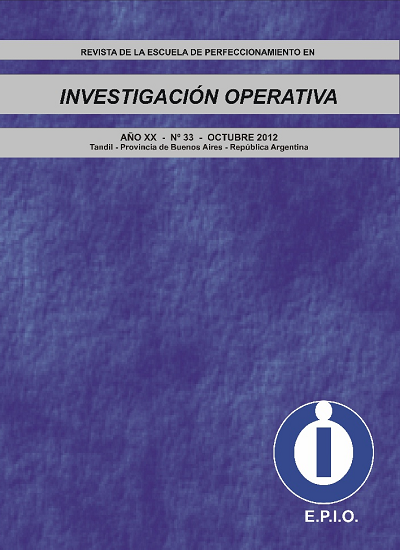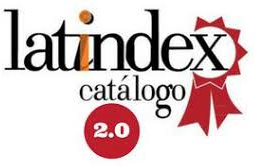Reducing imprecision in a human resource database through rough set theory
Keywords:
muticriteria decision aiding, decision-making, inconsistency, rough set theoryAbstract
This study deals with decision-making using replicated and inconsistent data, relating to the universe of Human Resources, within a domestic/local financial institution. Replication occurs because of technical and/or economic questions, and seeks to meet the corporate and departmental requirements of such an institution. As research methodology, direct observation of such inconsistencies was used as well as a simulation based on actual data which would reflect replication with inconsistencies. Application of a multi-criteria method became necessary in view of the need to render the decision-making process rational, and was transformed into an element that stimulated this study. The method used was Rough Set Theory (RST), inasmuch as there existed no other information on the occurrence of such inconsistencies. An algorithm was developed to indicate the major data sources and was subsequently implemented into a software to facilitate research of such sources.
Downloads
References
BIT, M.; BEAUBOUEF, T. (2008): “ROUGH SET UNCERTAINTY FOR ROBOTIC SYSTEMS”. Journal of Computing Sciences in Colleges, Association for Computing Machinery (ACM) – n. 23 (i. 6) – pgs. 126-132.
CODD, E. F. (1970): “A RELATIONAL MODEL OF DATA FOR LARGE SHARED DATA BANKS”. Communications of the ACM, n. 13 (6), pgs. 377-
387.
GOMES, L. F. A. M.; GOMES, C. F. S. (2001): “UMA TÉCNICA DE DATA MINING: PRINCÍPIOS BÁSICOS DOS CONJUNTOS APROXIMATIVOS E
SUAS APLICAÇÕES”. Revista ANGRAD, 2 n. (1), pgs. 13-22.
GOMES, L. F. A. M.; GOMES, C. F. S.; ALMEIDA, A. T. (2006): “TOMADA DE DECISÃO GERENCIAL: ENFOQUE MULTICRITÉRIO”. Atlas, São
Paulo, 289 pgs.
GRECO, S.; MATARAZZO, B.; SLOWINSKI, R. (2005): “DECISION RULE APPROACH”. In: Figueira, J.; Greco, S. and Ehrgott, M. (EDS.) Multiple
criteria decision analysis state of the art surveys. Springer, New York. Science + Business media, cap. 13, pgs. 507-561.
GRZYMALA-BUSSE, J. W. (1988): “KNOWLEDGE ACQUISITION UNDER UNCERTAINTY – A ROUGH SET APPROACH”. Journal of Intelligent and
Robotic Systems, n. 1, pgs. 3-16.
LIN, T. Y. (2008): ”ROUGH SET THEORY IN VERY LARGE DATABASES”. Available on: http://www.cs.sjsu.edu/~tylin/publications/paperList/82_rs_dm8.pdf>.
NOWICKI, R. (2008):”ON COMBINING NEURO-FUZZY ARCHITECTURES WITH THE ROUGH SET THEORY TO SOLVE CLASSIFICATION PROBLEMS WITH INCOMPLETE DATA”. IEEE Transactions on Knowledge and Data Engineering. Available on: <http://ieeexplore.ieee.org/Xplore/login.jsp URL=/IEL5/69/4358933/04487067.PDF?TP=&ARNUMBER=4487067&ISNU MBER=4358933>.
PAWLAK, Z. (1991): “ROUGH SETS. THEORETICAL ASPECTS OF REASONING ABOUT DATA”. Kluwer Academic Publishers, Dordrecht, 229
pgs.
PAWLAK, Z. (2000): “ROUGH SETS AND DECISION ANALYSIS”. Information Systems & Operational Research, n. 38 (3), pgs. 132-144.
PAWLAK, Z.; GRZYMALA-BUSSE, J.; SLOWINSKI, R.; ZIARKO, W. (1995): “ROUGH SETS”. Communications of the ACM, n. 38 (11), pgs. 89-95.
PAWLAK, Z.; SLOWINSKI, R. (1994): “ROUGH SET APPROACH TO MULTI-ATTRIBUTE DECISION ANALYSIS”. European Journal of Operational Research, Invited Review, n. 72, pgs. 443-459.
ROY, B.; BOUYSSOU, D. (1993): "AIDE MULTICRITÈRE À LA DÉCISION: MÉTHODES ET CAS". Economica, Paris. • SON, S. H. (1988): “REPLICATED DATA MANAGEMENT IN DISTRIBUTED DATABASE SYSTEMS”. Sigmod Record, n. 17 (4), pgs. 62-69.
TSUMOTO, S. (2000): “AUTOMATED KNOWLEDGE DISCOVERY IN CLINICAL DATABASES BASED ON ROUGH SET MODEL”. Information Systems & Operational Research, n. 38 (3), pgs. 196-207.
ZIARKO, W. (1993a): “ANALYSIS OF UNCERTAIN INFORMATION IN THE FRAMEWORK OF VARIABLE PRECISION ROUGH SETS”. Foundations of Computing and Decision Sciences, n. 18 (3-4), pgs. 381-396.
ZIARKO, W. (1993b): “VARIABLE PRECISION ROUGH SET MODEL”. Journal of Computer and System Sciences, n. 46 (1), pgs. 39-59.
Downloads
Published
Issue
Section
License
Atribución — Usted debe dar crédito de manera adecuada, brindar un enlace a la licencia, e indicar si se han realizado cambios. Puede hacerlo en cualquier forma razonable, pero no de forma tal que sugiera que usted o su uso tienen el apoyo de la licenciante.
NoComercial — Usted no puede hacer uso del material con propósitos comerciales.
CompartirIgual — Si remezcla, transforma o crea a partir del material, debe distribuir su contribución bajo la misma licencia del original.







